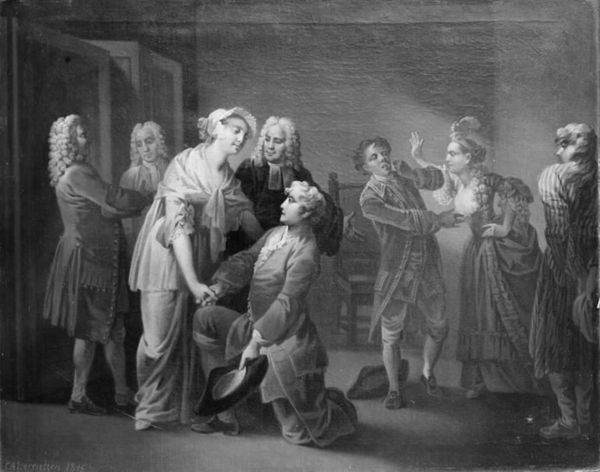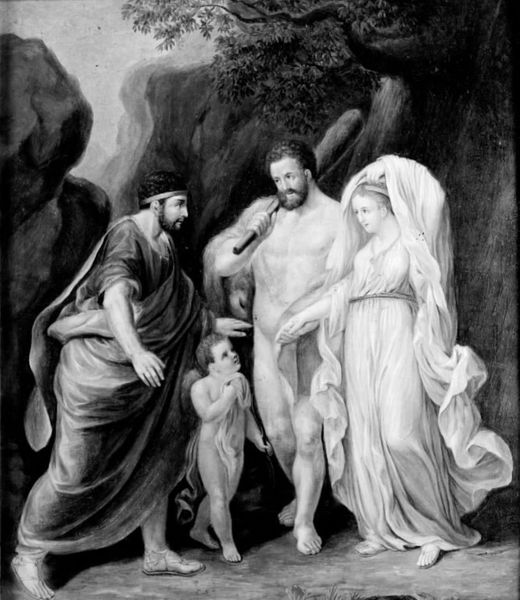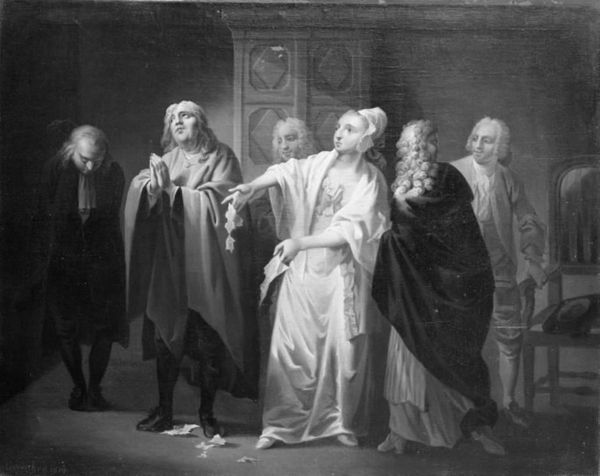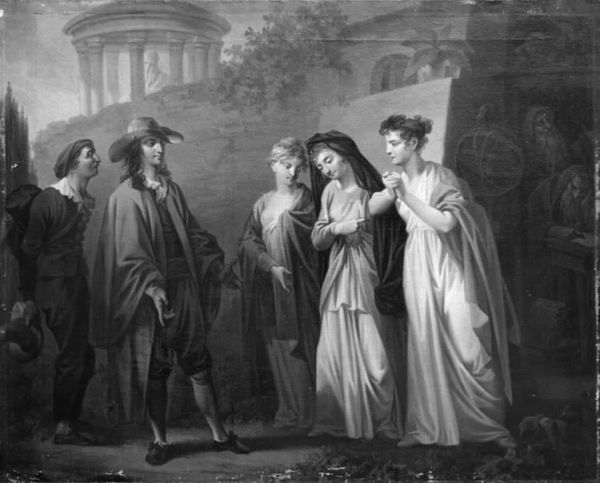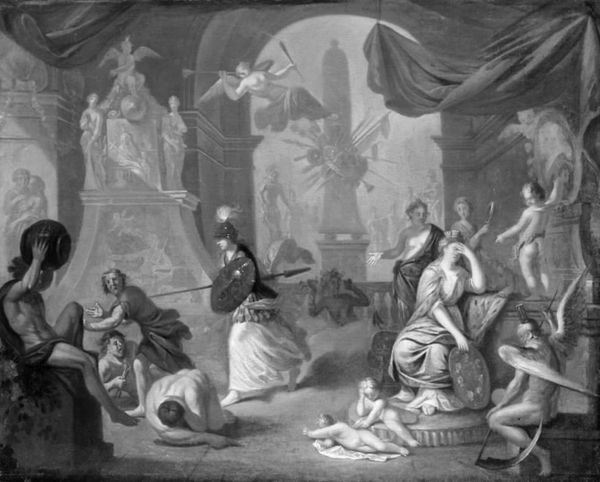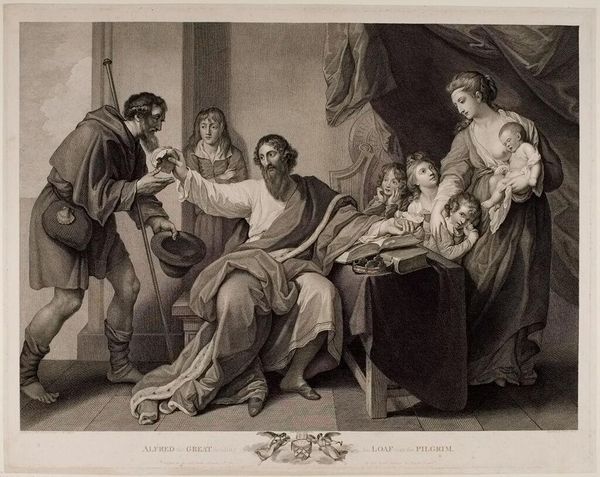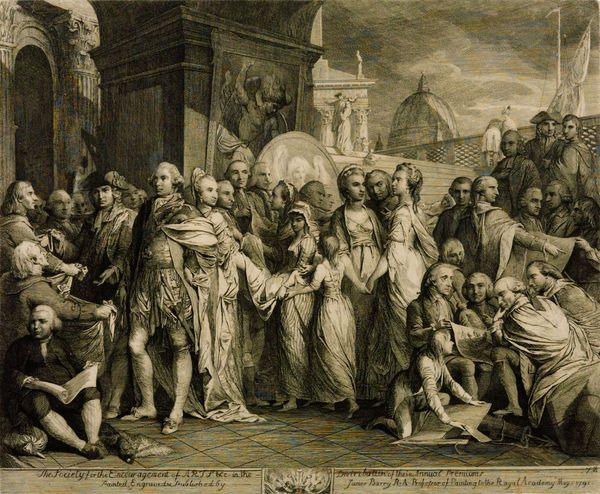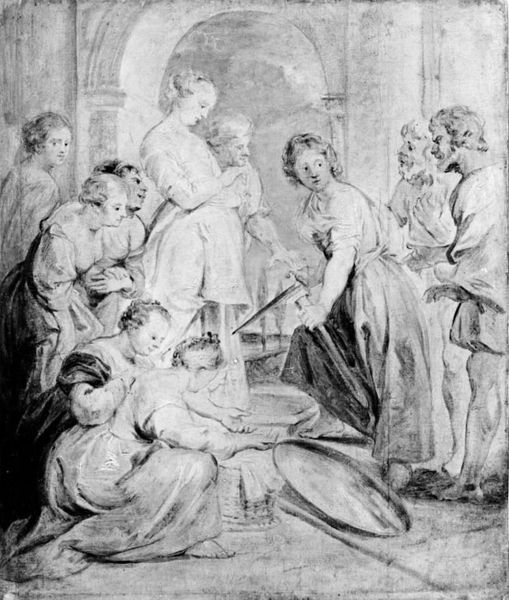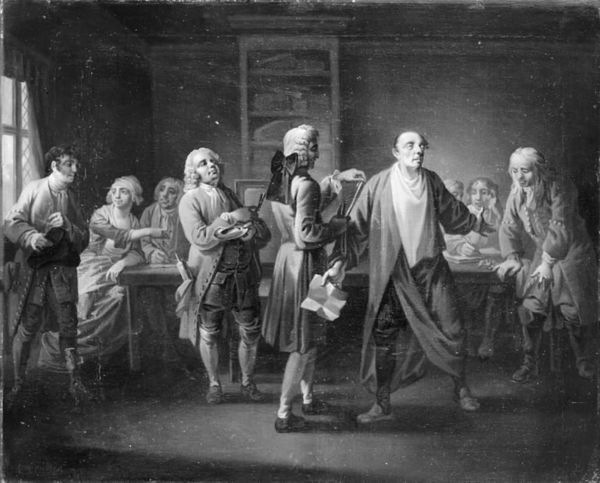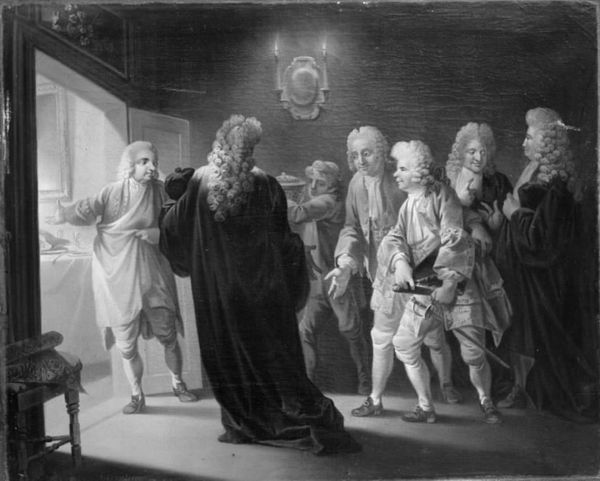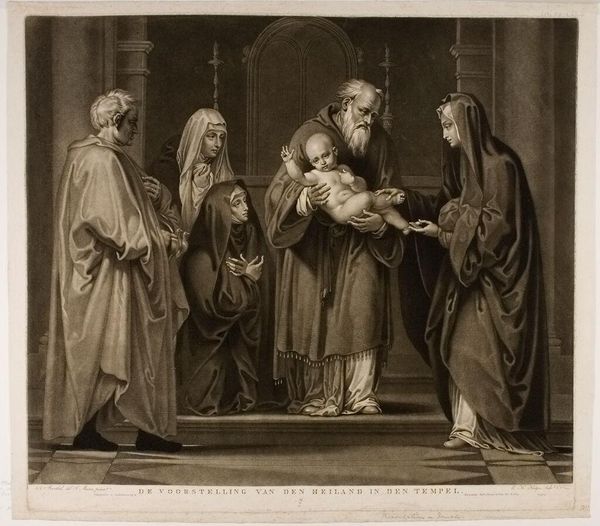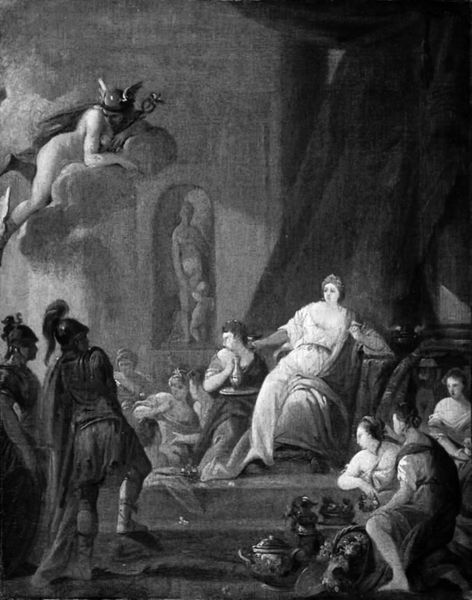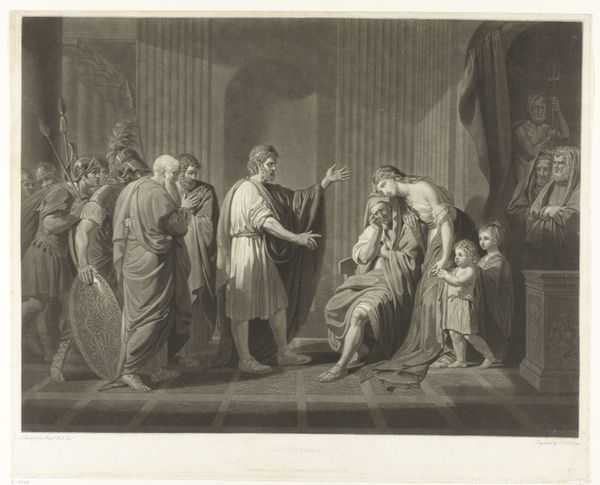
painting, canvas
#
portrait
#
neoclacissism
#
black and white photography
#
painting
#
figuration
#
canvas
#
group-portraits
#
black and white
#
history-painting
#
academic-art
#
monochrome
#
realism
#
monochrome
Dimensions: 60 cm (height) x 74 cm (width) (Netto)
Curator: Standing before us is "Plutus, IV akt, 4. scene", a painting completed in 1814 by C.A. Lorentzen. It’s rendered in oil on canvas and currently held at the SMK, the National Gallery of Denmark. Editor: The composition strikes me as rigidly staged, almost theatrical. The muted monochrome palette gives it a serious, antique gravitas. Who are these figures, and why do they seem so…posed? Curator: The painting depicts a scene from Aristophanes' play "Plutus," the fourth act, scene four. In this comedy, Wealth, or Plutus, is healed of his blindness and restored to rightful vision, causing social upheaval. It's a symbolic critique of wealth distribution. Editor: So, that central female figure with the children…she’s a representation of society, guided and potentially corrupted by wealth? The children could represent innocence being led into a world changed by restored economic vision? Curator: Precisely! The woman, possibly symbolizing Equity or Justice, stands at the center, seemingly guided or presented before a council. Notice the council members – they are representative of Greek senators or playwrights offering judgements as Plutus looks on. They observe and deliberate the implications of this newfound wealth, some perhaps already scheming. And just behind them to the left you'll see a depiction of Zeus. Editor: Yes, the looming backdrop with Greek mythological figures seems crucial for providing depth, further highlighting this neoclassical fascination. But even within that backdrop, Lorentzen presents a dichotomy. Curator: Exactly. It reflects the broader artistic and political context of Neoclassicism. Artists often employed classical imagery to comment on contemporary society. What symbolic details strike you as particularly significant? Editor: I find myself drawn to the way Lorentzen employs the shadows. They deepen the folds of the robes, emphasizing the weight of tradition and societal expectations on the characters, specifically highlighting how easily corrupted we can be by a false image. Curator: That's insightful. These shadows give tangible weight to the intangible forces at play. The scene's almost academic realism is undercut by this highly symbolic interplay, isn't it? Editor: Indeed. Despite its initial impression of stern historical representation, it operates on an allegorical plane. The restored sight of wealth carries many burdens. Thank you for unraveling some of that here. Curator: A pleasure. There's always a push and pull between ideal representation and the human cost to such ideology.
Comments
No comments
Be the first to comment and join the conversation on the ultimate creative platform.

